How to Reduce Customer Acquisition Cost
With acquisition costs rising and paid media strategies providing more challenging to execute effectively, leading D2C brands are revisiting their acquisition strategies. Together with experts from across the ecommerce industry, we bring you the ultimate guide to reducing customer acquisition cost.
Written By
Hannah Smiddy

As an ecommerce merchant doing business online, you’ll know all too well that the cost of acquiring new customers has been increasing, and fast. In fact, reports show that acquisition costs had increased by an average of 50% in five years, even before the pandemic hit and transformed the digital landscape.1
Rapid ecommerce growth during Covid-19 means there’s now a saturation of brands competing for customer attention with paid ads. As a result, acquisition costs are continuing to skyrocket across platforms. Throw into the mix changes to privacy laws and the resulting drop in advertising reach, and return on ad spend for many ecommerce marketers is falling short.
To reduce customer acquisition cost (CAC), brands need to adapt – particularly so if you’re reliant on paid ads as your primary method of acquiring new customers. By adapt, we mean (i) diversify your acquisition strategy, (ii) commit to improving the performance of your ecommerce store, and (iii) invest in customer retention.
“Brands have to become more strategic and creative in the face of increasing CAC,” says Matt Abbott, Head of Growth at Swanky.
“Look beyond paid ads for alternative acquisition methods. Which other channels could you use to reach and connect with your target audience?
“Next, focus on optimising your landing pages to improve conversions and offset higher acquisition costs. Something as simple as changing your call to action copy could be the catalyst for more conversions.
“Finally, consider how you can get more out of your existing customers. There’s lots to be said for focusing on customer retention in these times of rising acquisition costs – after all, it’s considerably cheaper to retain a customer than acquire a new one. The most successful brands will be those who leverage hyper-personalised customer experiences to engage shoppers across touchpoints and nurture meaningful, long-lasting relationships.”
In this article, we’ll be teaming up with some of our tech partners to bring you a go-to guide to reducing CAC. We should acknowledge at this point that no two businesses are the same, so not every tactic we consider will work for every brand. Nevertheless, we hope this guide will provide the inspiration and information you need to adapt your ecommerce marketing strategy and lower your acquisition costs.
Let’s start by exploring some key terms.
What is customer acquisition?
Put simply, customer acquisition refers to the process of gaining new customers. The process is often visualised as a funnel:
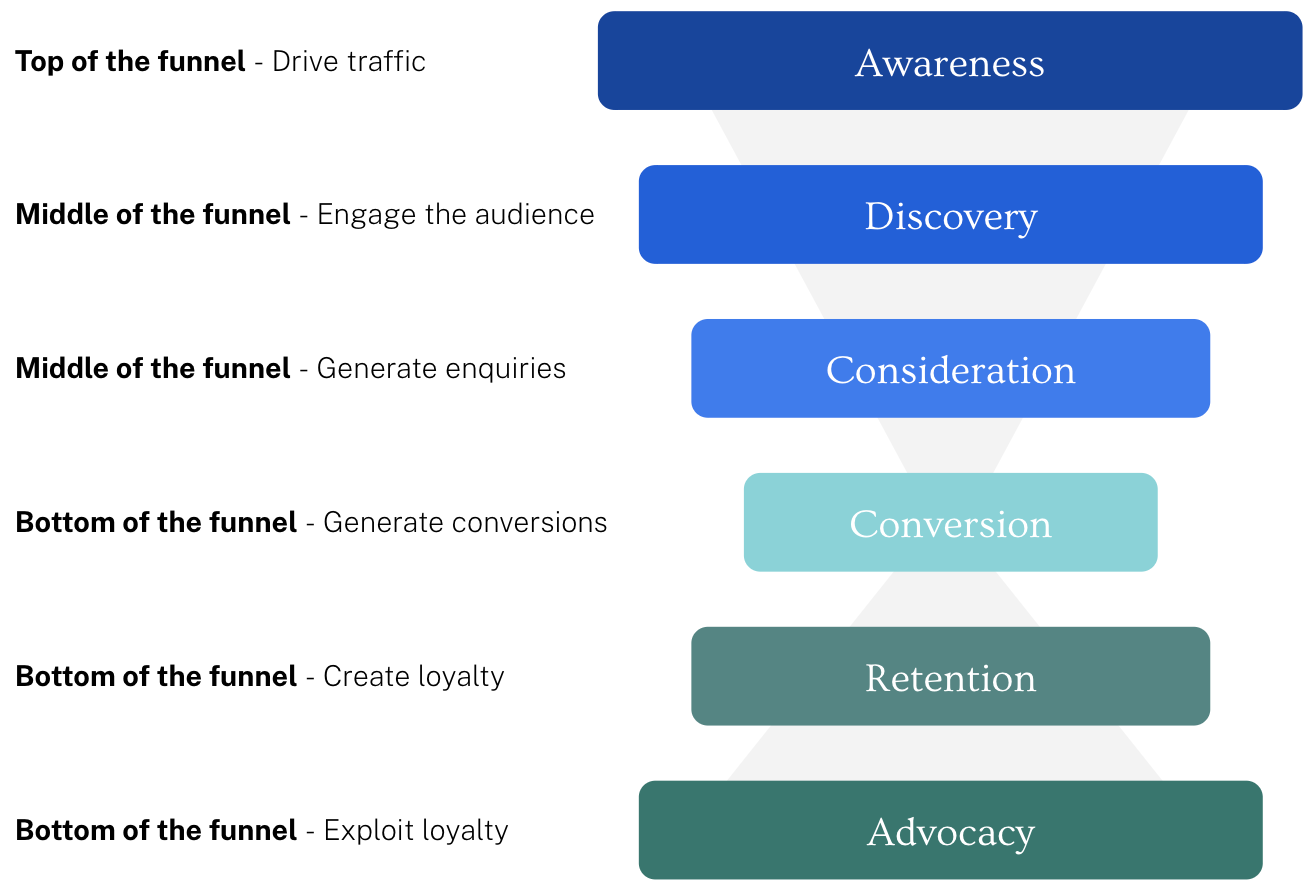
Let’s look at the three overarching stages of the funnel in a bit more detail:
1. Top of the funnel – This stage is all about building awareness of your brand, creating interest in what you sell, and generating leads amongst your target audience on a broad scale.
2. Middle of the funnel – In this stage of the purchase journey, prospective customers have added your product or service to their consideration pool and displayed some form of intent to buy.
3. Bottom of the funnel – During this final stage, your job is to convert prospects into paying customers, encouraging them to click that all-important “Checkout” button. Once they’ve converted, your focus should be on building and leveraging loyalty.
How do you calculate customer acquisition cost?
CAC refers to the cost associated with bringing a new customer to your business.
To calculate CAC, take the total cost used to acquire new customers and divide it by the number of new customers acquired.
For example, let’s say you spend a total of £2,000 on acquisition and you acquire 10 new customers. In this case, your CAC is £200 (£2,000/10).
As a metric, CAC is useful as it paints a picture of how effective and profitable your marketing efforts are, and allows you to easily compare different marketing tactics. The lower your CAC, the more effective your acquisition strategies.
Don’t forget though, that whilst CAC is a good metric to follow, it isn’t the only success metric for marketing activities. Channel attribution is more complicated than it used to be, thanks to the increase in privacy and the expansion of multi-device interactions pre-sale that aren’t possible to track completely.
Reduce CAC with these tactics
Having defined CAC and why it’s a useful metric for ecommerce brands, we’re going to explore how you reduce it by acquiring customers at the lowest cost possible.
We’ll be exploring these three areas in more detail:
- Diversifying your customer acquisition strategy beyond paid ads
- Improving your website’s conversion rate
- Focusing on retaining and boosting the value of your existing customers
#1 Diversifying your customer acquisition strategy beyond paid ads
Costs for specific acquisition channels can rise over time, as we’ve seen with paid ads. To help reduce CAC, it’s worth taking an agile approach to your acquisition strategy and exploring other, less costly channels to invest in.
When you use a variety of customer acquisition methods, you have a greater chance of creating brand awareness, reaching new audiences and generating new leads. Plus, diversifying your approach can help you to balance risk and reward, allowing you to easily reallocate funds from underperforming channels to those that are more effective.
Let’s look at some of the other channels you can explore as part of your customer acquisition strategy, beyond paid ads:
Affiliate marketing
First up, it’s affiliate marketing, a top customer acquisition method for 40% of marketers.2
At a basic level, this strategy involves affiliates promoting a brand and its products to their networks in exchange for a commission on every sale. They may also earn commission on other actions, like email sign-ups, clicks or content downloads. Affiliate marketing is a performance-based strategy, with retailers typically only paying affiliates once they deliver results. This makes it an effective way to reduce CAC.
Affiliate marketing is an attractive model for ecommerce merchants. Not only does it increase brand exposure, provide third-party validation and generate sales, but it has a strong return on investment and is easily scalable.
“To further capitalise on the growth potential for affiliate marketing, consider partnering with a robust affiliate marketing platform,” says Ruthie Carey, Content Marketing Manager at Refersion.
“With an affiliate, influencer, and ambassador platform like Refersion, you can easily recruit and onboard affiliates and influencers with a branded registration page, pop-ups, and Refersion Marketplace. Then you can use Refersion’s technology to create and track all affiliate offers by links, coupons, emails, or products. Refersion’s advanced affiliate tracking and management tool does all the heavy lifting of customer acquisition for you, so you can focus on building brand awareness and driving sustainable growth.”
Referral / advocacy marketing
Referral or advocacy marketing taps into your loyal customers’ personal networks of friends and family, harnessing the power of word-of-mouth to acquire new customers without the sky-high acquisition costs. Plus, referred customers often have higher lifetime values and are more loyal than customers acquired through other means.
We talked to Andy Cockburn, CEO and Co-Founder at referral platform Mention Me, to get his take on why merchants should diversify their acquisition channels and explore referral marketing:
“A big shift to marketing is coming. Over the past five years, acquisition costs have soared and are increasingly unpredictable. As a result, marketers can no longer rely on paid search and social channels to grow their businesses.
“To win in this new landscape, businesses must genuinely put their customers first and focus on creating a brand they love. By getting this right, they’ll build a loyal customer base that raves about them to their friends. These customers will spend more and cost less to acquire – that’s the holy grail of ecommerce.
“Through working with brands like Huel, MatchesFashion and Charlotte Tilbury, Mention Me is seeing first-hand how this advocacy-first approach builds powerful two-way customer relationships that drive significant revenue. The brands that nurture customer love, underpinned by a sophisticated referral programme, will be the ones to prosper in the times ahead.”
Here are some tips to create a successful referral marketing strategy:
- Before anything else, you’ll need to make sure your business is a well-oiled machine that’s keeping your existing customers happy and engaged. They won’t want to refer their friends if they’ve received a bad product or aren’t happy with the customer service they’ve received.
- Be sure to come up with a compelling offer that will incentivise your customers to spread the word. Free shipping is a popular reward, as are discounts and free gifts. Consider a program that rewards both the referrer and the person being referred for maximum appeal – just like popular pasta subscription brand and Swanky client Pasta Evangelists have.
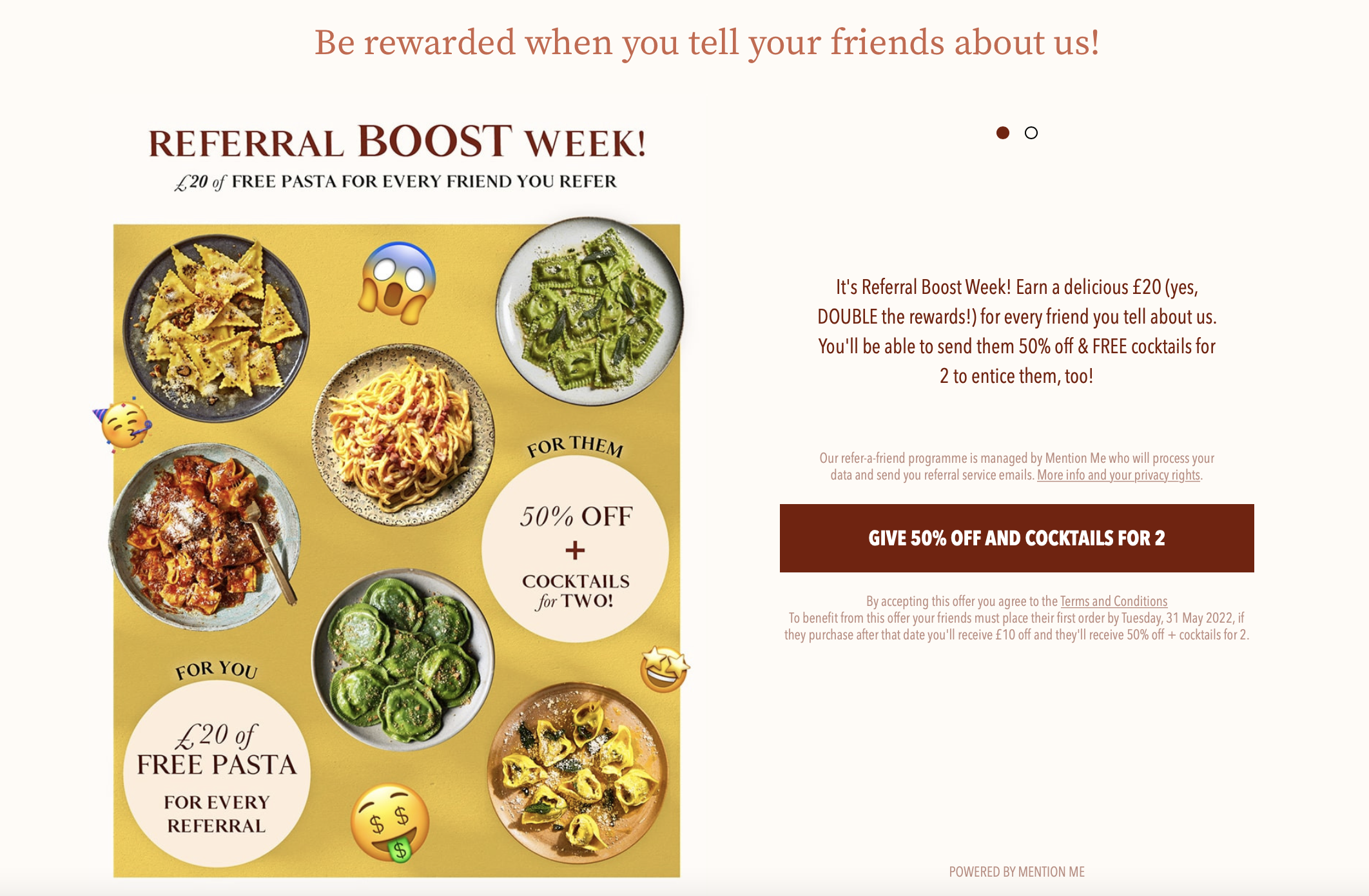
- Make it as easy as possible for customers to engage in your referral program. This means making the offer clearly visible across your ecommerce site, promoting it across your marketing channels, and having a dedicated landing page with a simple referral form.
- Continually review, test and optimise your referral program. Experiment with different rewards to see which resonate most with your customers, test out different calls to action on your ecommerce store to find which generate most clicks, and tweak your landing pages to identify the messaging and designs that drive the best results. Our guide to split testing on Shopify has some great tips to get you started with ecommerce experimentation.
Email marketing
Done right, email marketing can be a powerful customer acquisition tool. It can work wonders further down the purchase funnel, helping to transform interested leads into paying customers. It’s also one of the most inexpensive communication channels available, often providing an impressive return on investment ($36 for every $1 spent, according to recent reports!3).
We asked Phil Greenwood from email marketing automation platform Klaviyo why this method is a smart choice for ecommerce acquisition:
“Most website visitors leave an ecommerce website without making a purchase. But those people still might be interested in making a purchase; they may just need more interactions with your brand before they decide to buy. However, creating those touchpoints with paid ads is often expensive.
“Paid advertising is effective for generating first-time traffic to your store, but it’s an unsustainable way to retarget, nurture, and convert new customers who don’t purchase straight away. That’s why directing your website visitors to subscribe to your email list is so powerful. Through email marketing, you can build up a more personal relationship that’s much more cost-effective.”
A deliberate ecommerce email marketing acquisition strategy allows you to:
- Connect with your audience on a personal level and build ongoing customer relationships.
- Promote relevant content, products and promotions.
- Push your prospect closer to that all-important checkout button.
- Monitor audience behaviour and learn more about what your individual email subscribers are interested in – which emails do they open and which links do they click on? The more you get to know your subscribers, the more you can tailor your email communication, and the more likely they are to convert.
What’s more, whilst a paid ads strategy is vulnerable to algorithm tweaks and rising costs, email marketing is much more stable.
Content marketing and SEO
“Whilst paid advertising is a viable and valuable marketing tool, sustaining a long-term strategy is becoming increasingly challenging,” says Anna Giles, Digital Content Manager at Swanky.
“Traditionally, content marketing has taken a back seat to things like PPC, but now it’s being embraced by more and more ecommerce brands thanks to its longevity, lower costs and stable content assets that bring in a steady stream of traffic and conversions.”
A carefully considered, keyword optimised content marketing strategy can be leveraged to drive organic growth and reduce the long term cost of acquiring a new customer. Great content, whether that’s a blog post, infographic, video or podcast, nurtures prospects through the customer acquisition funnel. It establishes your brand as a credible and authoritative player in your industry, providing value for consumers and convincing them that you can deliver exactly what they need.
You can read about the other benefits of ecommerce content marketing, with more insights from content expert Anna, on our blog.
It’s important to align your content with the customer journey. People at the top of the funnel will likely need lots of information about how you can solve their problem – which you can provide through educational blog posts, ebooks and expert content. Try to include a call to action that pushes them into the next stage of the funnel.
Meanwhile, things like case studies, testimonials and brand comparisons are perfect for convincing someone nearer the bottom of the funnel that your brand is right for them.
Global baby dock brand and Swanky client DockATot have an effective mix of content on their blog, with posts that are relevant for users at all stages of the funnel. For example, the article with tips for new mums going back to work is aligned with the top of the funnel, targeting a topic that the brand’s target audience will be searching for advice and resources on. Meanwhile, the interview with a “yoga mum” and DockATot customer is great for a buyer in the consideration stage who’s evaluating whether a dock is a good fit for them and their lifestyle.
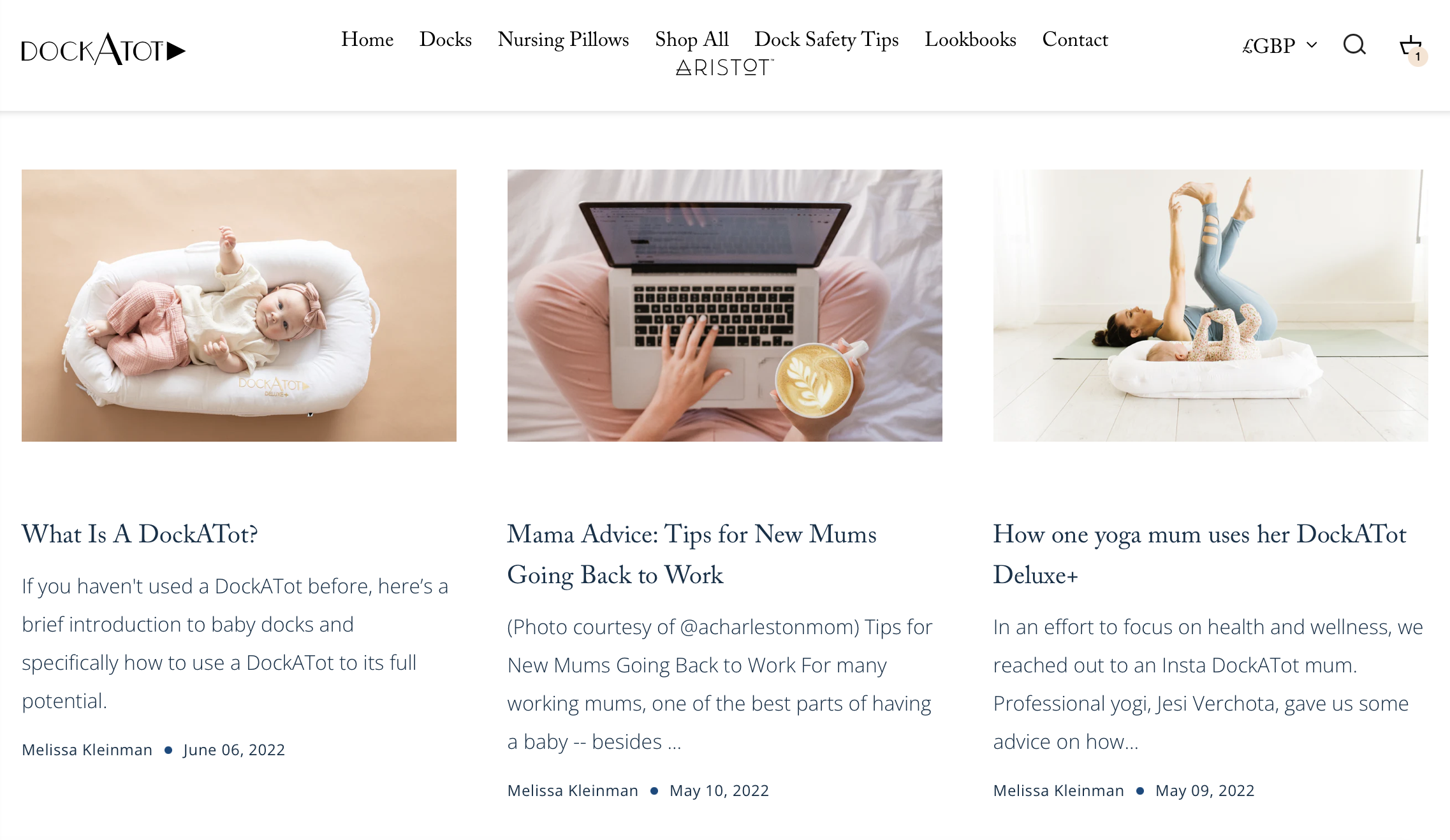
If you’re looking for a good place to start when it comes to improving customer acquisition with content, optimising your best performing content is a great ‘quick win’. Identify the content that you know is driving high volumes of traffic to your ecommerce site, then take steps to ensure it converts visitors into leads.
Organic social media
Another long-game tactic to consider is the use of organic social media. Whilst it won’t bring you results overnight, it can be invaluable for raising brand awareness at scale and keeping your brand top-of-mind. It also makes a great cheerleader for other acquisition methods, like content and influencer marketing.
Here are some top tips for leveraging organic social media as a customer acquisition tool:
- The key is accessing the right networks. Start by doing your research to find out which social platforms you’ll most likely find your ideal customer on. Look for specific groups that have been set up in your industry or niche, and suss out which hashtags are popular amongst your target audience.
- Experiment with the type and timings of social media posts to find out exactly what your audience likes and when they’re most responsive.
- Post links to your content with inviting calls to action. We all know just how effective carefully crafted content can be for your brand, so make sure you direct followers to your blog or YouTube channel within your social posts.
- Leverage user-generated content in your posts to inspire confidence amongst your follower base and trigger FOMO.
- Level up your customer service game on social media. Answering questions promptly, and with a smile, will help build trust amongst would-be-customers, helping to nudge them along the acquisition funnel. What’s more, showcasing a high level of customer support on public platforms is a great way to elevate your reputation and drive positive press – thereby increasing awareness and perception of your brand.
Influencer marketing
Influencer marketing can spark organic conversations around your products and drive awareness of your brand (working its magic at the top of the funnel), but is also a powerful way of persuading prospective purchasers to take the plunge (driving results in the middle and bottom of the funnel too).
With its ability to easily consume a marketing budget, you might be wincing in fear at the thought of implementing an influencer marketing model. However, we’re here to tell you that you don’t have to spend an eye-watering amount of money to be able to enjoy the benefits of this acquisition strategy. Whilst hiring celebrities and established social media personalities with millions of followers can indeed be a pricey game to play, there are plenty of cheaper opportunities to be had a little closer to home.
We’d recommend delving into your customer base and identifying micro-influencers – that’s typically people with between 10k and 100k followers – to collaborate with. You can offer them a free product or discount code in return – after all, as an existing customer you know they’re already a fan of your products.
Not only is this significantly cheaper than partnering with macro-influencers, but individuals with smaller followings can often come across as more relatable and are more likely to establish authentic connections with their followers. This is crucial for building trust and driving results as an influencer.
Popular US beverage brand La Croix leverage the power of Instagram micro-influencers to showcase their products to their target audience and drive results across the acquisition funnel. They look for posts from relatable accounts with smaller followings, sending vouchers or free cases of their drinks to those who publish user-generated content tagged with #LiveLaCroix.

We talk more about the benefits of influencer marketing on the Swanky blog.
Teamwork makes the (acquisition) dream work
As you can see, these customer acquisition methods work well in tandem. They connect nicely, working together to raise awareness of your brand and nurture consumers through the purchase funnel. With this in mind, remember not to put all your acquisition eggs in one basket – instead, leverage a multi-channel customer acquisition strategy to maximise results and reduce risk.
#2 Improve your conversion rate
Thinking back to the CAC formula we shared earlier, we know that turning more visitors into customers can reduce acquisition costs.
For example, if you spend £200 on acquisition and get five new customers, your CAC is £40 per customer. However, if you spend the same amount and convert 10 new customers, your CAC decreases to £20.
It’s for that reason conversion rate optimisation (CRO) should be an essential part of any digital marketer’s toolkit – it improves the performance of your acquisition channels and thereby reduces your CAC.
So, what can you do to increase the number of people converting into customers? Sammy Fraser, Lead Digital Strategist at Swanky, has the answer:
“To boost the percentage of users who are performing a desired action on a website, like buying a product and becoming a customer, you need a thorough CRO strategy.
“Using what you know about your customers and their behaviour, you can improve the customer experience, push more people through the checkout, and ultimately get more out of your acquisition spend.
“Make sure you’re not simply operating on gut feelings when it comes to CRO, though. You’ll need to look at the data behind your website to identify where the pain points are, whilst keeping in mind your business’ unique goals.”
Ideas for increasing conversion rate
When it comes to making improvements on your ecommerce website, the possibilities are endless. Here are just a few ideas for where to start when it comes to increasing conversion rate and reducing CAC:
- Make it as simple and intuitive as possible to navigate your site. If it’s difficult for a customer to find their way around, they won’t waste any time in trying out another brand’s website. Test different navigation options to find out which ones have the most positive impact on conversions.
- Use high-quality imagery. Blurry, dull, inconsistent images will turn visitors off in an instant, triggering caution and distrust. High-res, well-lit, consistently-styled photographs, however, instantly convey credibility. Contemporary womenswear brand and long-term Swanky client Needle & Thread have a stunning collection of images that they leverage on their Shopify Plus store. Their lifestyle photographs perfectly portray the soft elegance and intricate embroidery of their products, whilst conveying the brand as a quality, trusted retailer.
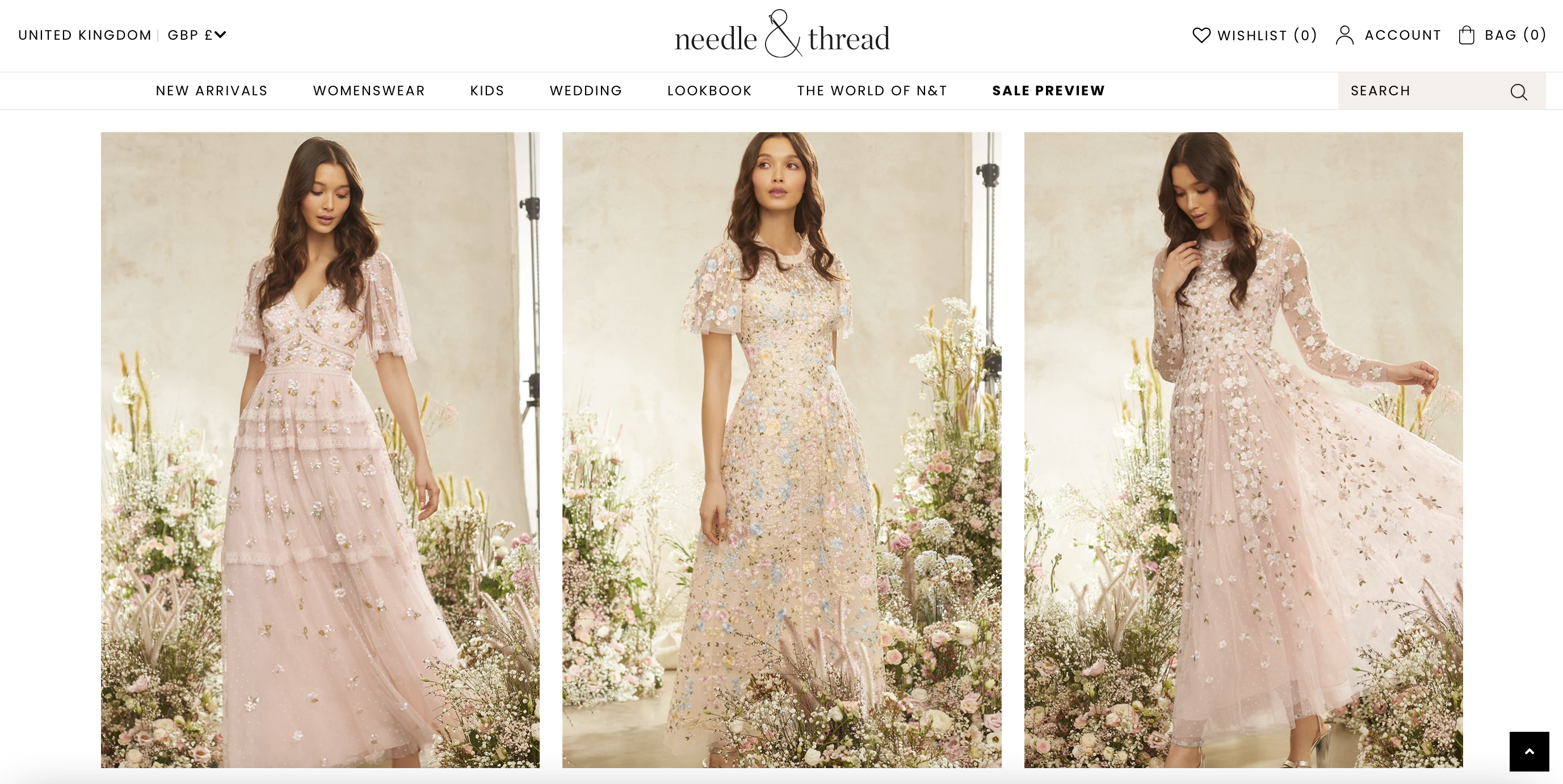
- Strengthen your calls to action (CTAs). Experiment with copy, colour, size and placement to identify which combinations drive the most clicks. Our guide to effective CTAs has a whole host of tips to help you increase conversions.
- Optimise your product descriptions. You don’t have much copy to play with here, so these need to pack a punch. Highlight the benefits of your products and emphasise the features that make them stand out from others in the market – all whilst keeping sentences short, snappy and engaging.
- Showcase social proof. Reviews, endorsements and recommendations have a powerful impact on your ecommerce store – after all, we want to buy things that we know other people, especially those similar to us, are using and enjoying. Display social proof in a prominent position across your website, including on your homepage and product pages. Australian subscription brand Whisky Loot execute this tactic superbly on their Shopify Plus store, leveraging star ratings, reviews and endorsements at various points across their homepage.
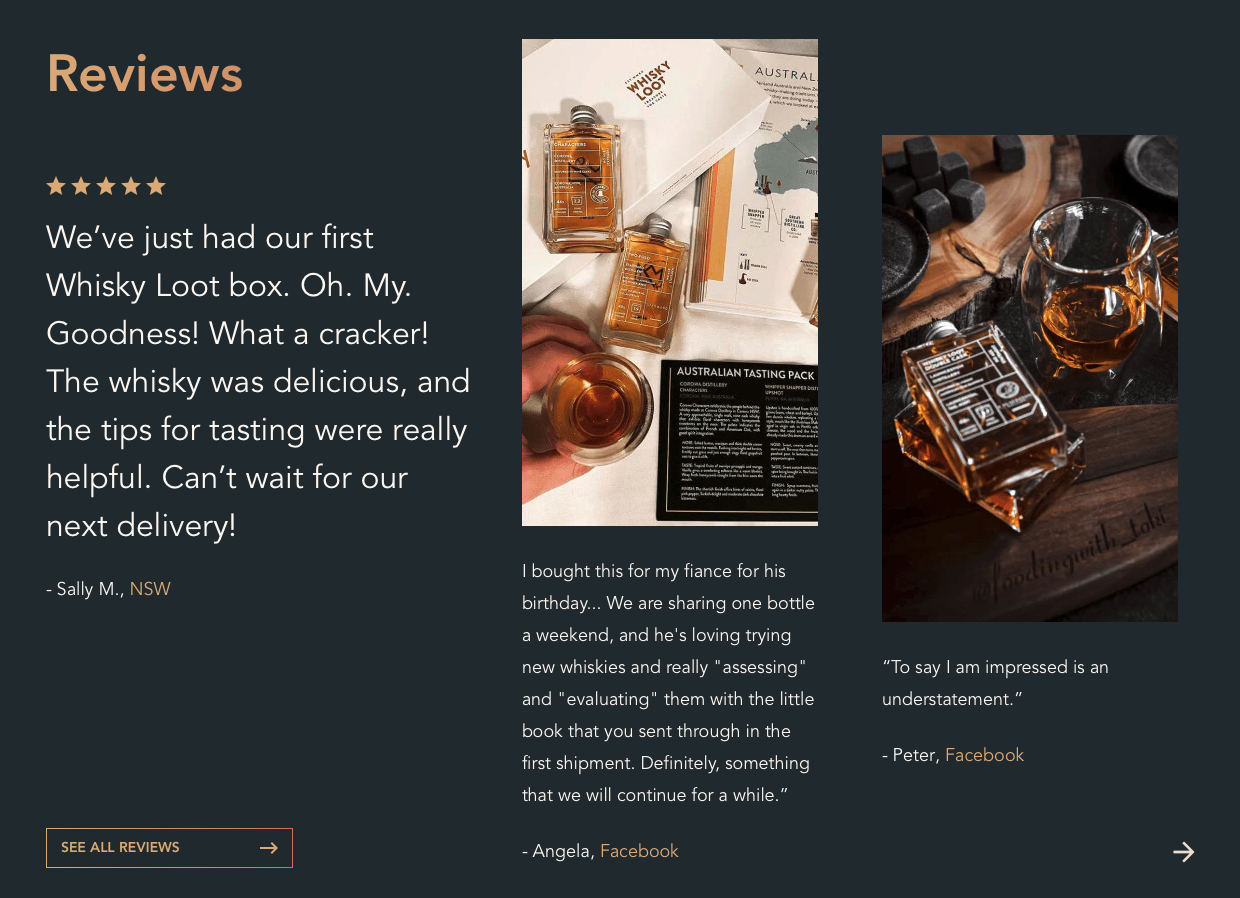
- Offer multiple payment options at checkout. Don’t risk losing a potential customer at the final hurdle. Find out which payment methods your target audience typically use and prefer, and make sure you can cater to their needs. “We recently saw a large decrease in cart abandonment when we added Apple Pay to the DockATot website,” explains Sammy. “Our customer research told us that users of the site are typically tired and busy parents, who might be put off by having to find their card to make a payment. Having Apple Pay as an option means we can appeal directly to their need for speed and convenience.”
It’s important to consider the customer journey as a whole when you’re looking to increase conversion rate, as Matt Abbott explains:
“At Swanky, we don’t just look at the on-site performance when we’re working with clients on CRO, we look at the full customer journey. This means tailoring the on-site experience based on the propensity state a customer is most likely to be in depending on the channel they have arrived by. And that’s before we even start with personalisation.”
Typically, you’ll want to start optimising in the parts of your funnel that receive the largest amount of traffic or produce the most conversions. You should see the biggest and quickest impact in these places. Similarly, prioritising your highest value pages or those that aren’t converting as well as you’d like can deliver speedy and significant results.
Our step-by-step guide to brainstorming and prioritising ecommerce testing ideas is a useful resource if you’re just starting out with, or looking to improve, your CRO strategy.
#3 Focus on retaining and boosting the lifetime value of your existing customers
With acquisition swallowing up more and more of their marketing budget, many brands have turned their attention to retaining their existing customers and increasing their lifetime value, rather than investing in acquiring new customers. Indeed, getting more out of your current customers will optimise your return on acquisition marketing spend.
Focus on increasing repeat purchase rate, average order values (AOV) and customer retention by nurturing relationships, creating personalised experiences and rewarding loyal shoppers.
Nurture relationships with personalised email marketing
Earlier, we talked about how email marketing can be used to drive the first sale, but it’s also an effective tool for unlocking more revenue from your most valuable customers – it’s good for both acquisition and retention.
Ditch the one-size-fits-all email blasts. Instead, use what you know about your customers and their behaviour to send targeted emails that compel action. Make your shoppers feel valued as individuals, with relevant subject lines and personalised offers. This will increase engagement, help strengthen your customer relationships and boost brand loyalty in the long-run.
Need some inspiration to get you started? Here are a few ideas for personalised email campaigns:
- Say thank you to shoppers (and encourage them to purchase from you again!) with an email that includes a time-limited incentive, like a discount code or free shipping. Add in some personalised product recommendations to increase relevancy and encourage action.
- Re-engage customers who haven’t visited your store in a while with a tailored “we miss you” email, packed full of relevant content and recommendations. Popular beauty and cosmetics brand Revolution have done exactly this in the example below:
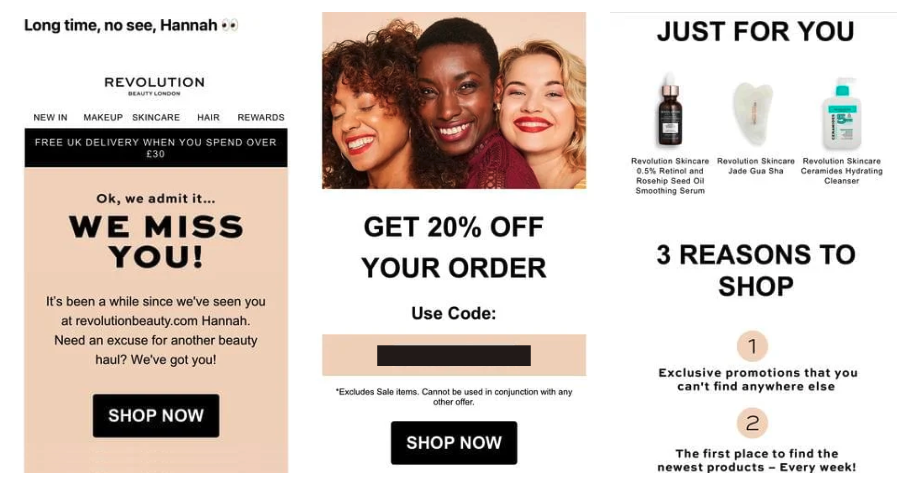
- Ask for feedback on a product they’ve recently bought. Not only does this show that you value their opinion, thereby helping to strengthen your brand-customer relationship, their review can be leveraged as social proof across your website and marketing channels.
Check out these five email personalisation tips to maximise the potential of your retention strategy.
Leverage SMS marketing
One retention tool that all-too-often goes under the radar in ecommerce is the use of SMS. This is a low-cost and effective way to increase customer lifetime value (CLTV). Plus, a comprehensive, personalised SMS strategy brings with it all these other benefits:
- Direct and immediate communication with your customers..
- Increased engagement – did you know that texting your customers can drive 8x higher engagement rates than email?4
- Reduced browse and cart abandonment.
- Improved conversion rates.
- Stronger connections, which lead to more loyal customers.
When it comes to creating an excellent mobile experience for your shoppers, ecommerce marketing platform Yotpo allows you to create, test and track personalised text messages in just a few clicks. Find out more about their SMSBump feature and how it can help you foster meaningful relationships with your customers.
Engage with loyal customers
“The best way to acquire new customers cost-effectively in this opt-out era is to further engage with existing ones – your Insider Community,” explains Fiona Stevens, Head of Marketing at LoyaltyLion.
“These are the loyal shoppers who frequently interact, share personal information, engage on social media, refer new customers, and frequently make purchases. For the average brand, the Insider Community forms the top 20% of customers, who generate approximately 50% of total revenue. Insiders also have a far higher CLTV, spending 40% more than regular shoppers on an annual basis.
“Offering personalised communications, experiences and incentives to your Insider Community will ensure that they continue to share more personal data to get more of these experiences. This will help you to retain these customers, but also acquire new ones who also want to share their data in return for these exclusive shopping experiences, driving sustainable growth more cost-effectively.”
If you’re wondering how you can successfully engage with and drive more value from your Insider Community, we’ve rounded up a few ideas. These strategies will also help to motivate the rest of your customers to work towards Insider status.
- Use a tiered loyalty program to give Insiders the biggest and best perks – we’re talking free gifts, early access to sales, and one-of-a-kind experiences. For example, US baby boutique Pish Posh Baby give customers in the top tier of their Posh Points program a more comprehensive list of benefits:
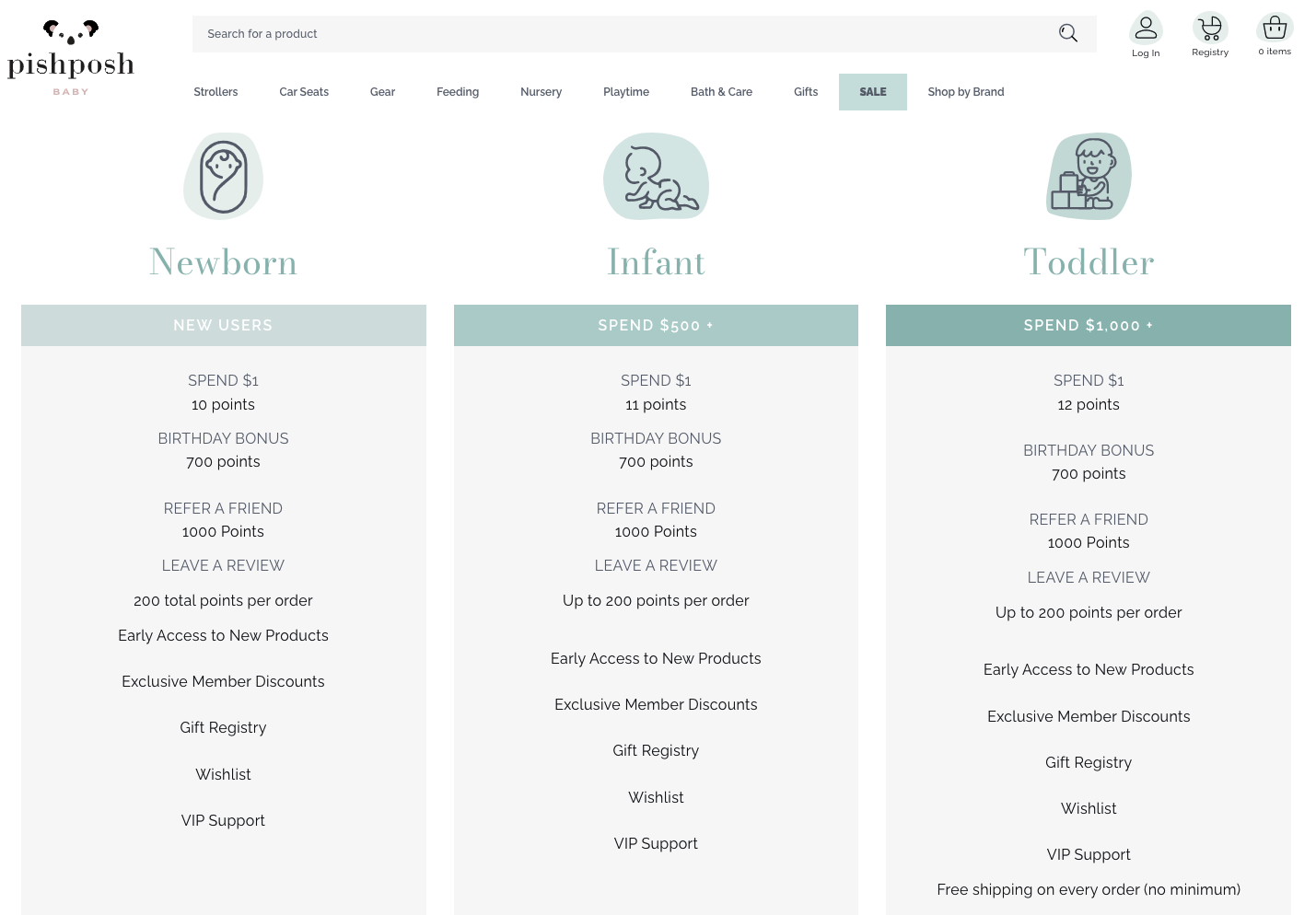
- Offer a closed space for your biggest brand cheerleaders to connect with each other emotionally over shared interests and common values.
- Surprise Insiders with personalised gifts – like a freebie or discount code on their birthday.
- Show that you truly value your Insiders by asking for feedback and ideas for new products. Your Insider Community will give you insightful feedback that could prove extremely valuable to your product development strategy.
- Empower your customers by offering them exclusive opportunities to join you in championing a social or charitable cause.
Want to retain your loyal customers for longer using a Shopify Plus loyalty program? Take a look at LoyaltyLion’s ultimate guide to loyalty on Shopify Plus.
Consider a subscription model
With a subscription model, your customers’ repeat business is implied when they go through the checkout. You’re ensured a consistent source of recurring revenue from repeat customers (providing you keep your subscribers satisfied, of course!). The longer someone keeps their subscription active, the greater their lifetime value – which means you’re getting much better value for money when it comes to your acquisition spends.
A simple ‘subscribe and save’ initiative, like this one that our client YuMOVE offers, is a quick way to introduce a subscription service for brands selling consumables.
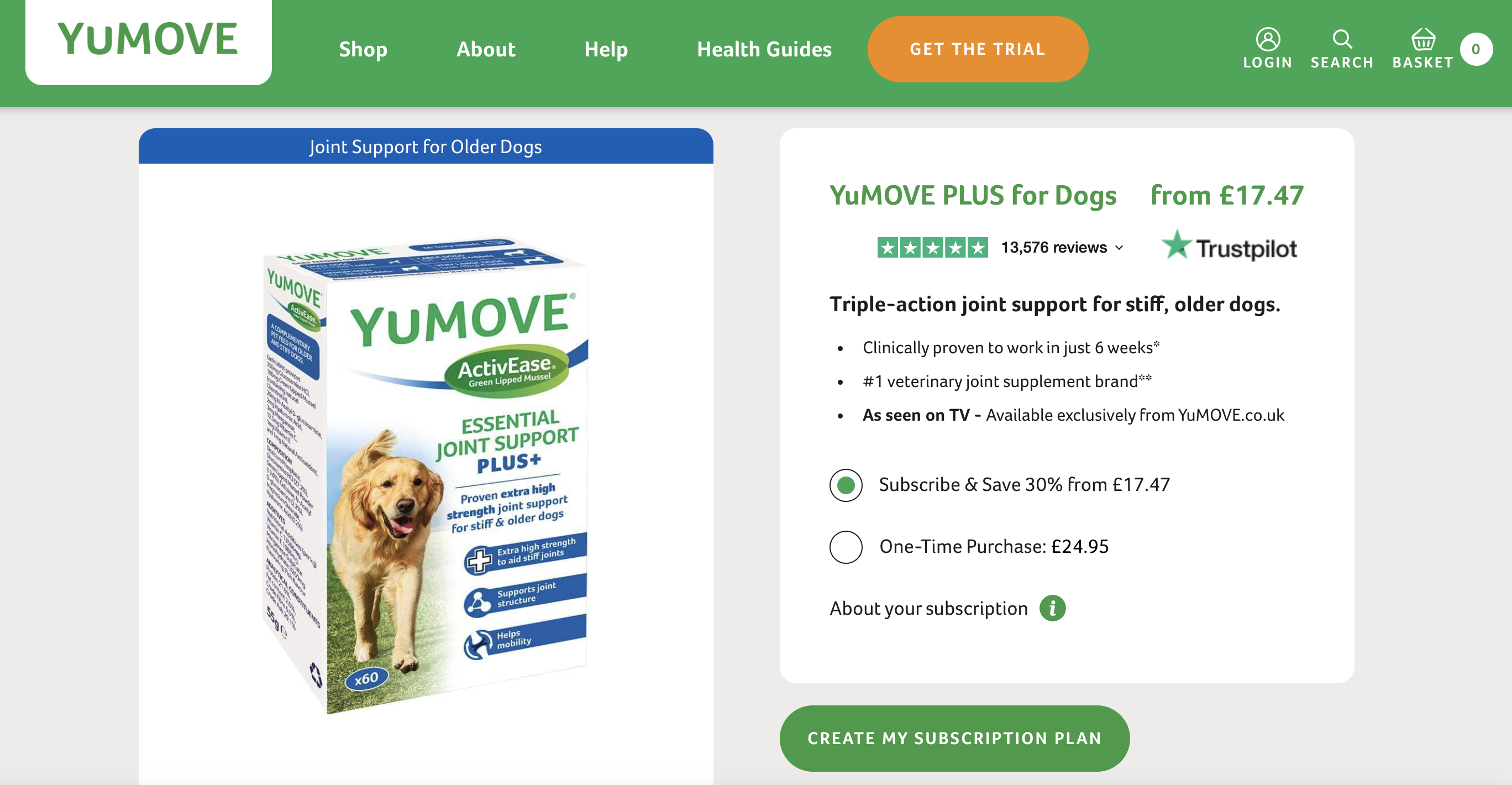
A compelling subscription landing page that clearly explains the value of your recurring offering is vital to encourage sign-ups, as Sara Heegaard, from leading subscription solution Recharge, explains:
“Many consumers today still have misconceptions about subscriptions, and that hesitancy can prevent them from signing up. A subscription landing page provides a place for you to educate those shoppers about your products and services and set expectations for what’s to come.
“When building out your subscription landing page, some best practices to keep in mind include consistently showcasing your brand’s unique value, clearly communicating your subscription timeline and benefits, leveraging social proof, and providing strong calls-to-action.”
Get more tips from Sara on how to attract high-value subscribers in her blog post on subscriber acquisition.
Once you’ve acquired a subscriber, what can you do to ensure they stick around? When it comes to keeping them happy and avoiding churn, here are some tips from our experience working with global D2C subscription brands like HelloFresh and Huel:
- Clear, regular communication is key. Leverage email and SMS to keep subscribers in the loop with notifications about charges and deliveries. Go beyond this basic communication to connect with your customers on a deeper level, using data to personalise your messaging and provide a more engaging brand experience.
- Give subscribers the ability to change the cadence, contents or destination of their subscription depending on their needs.
- Make it easy to cancel a subscription altogether. Whilst this may seem counterintuitive, this will give customers confidence to sign up to a recurring delivery in the first place.
- Enrich the subscription experience (and increase AOV) with personalised cross-sell recommendations. Show that you understand a customer’s individual needs by suggesting products that will benefit them – this can do wonders for strengthening brand-consumer relationships.
To read more about implementing a successful subscription strategy on your Shopify store, you can check out our guide to a successful food and drink subscription website, or our article on how to keep your health and wellness subscription site in good shape, for some sector-specific advice.
Provide five-star customer service
Every ecommerce retailer knows the perils of providing poor customer service: a knock to your reputation, fewer referrals, and a dwindling chance of retaining shoppers. It’s easy to forget how important the post-checkout experience is for customers if you want to win them over again.
On the flip side though, provide stellar service across all touchpoints and you’ll have plenty of happy customers who keep coming back for more and share the love with their friends and family. It’s crucial for building long-term relationships with your customers and ultimately increasing their lifetime value.
But what does it take to create a winning customer service strategy? We take a deep dive into the characteristics of good customer service in another article on our blog, but here are the top-level highlights:
- Timely responses to customer queries;
- Deliver orders on time and with clear communication and/or tracking;
- Treating your customers like individuals, with personal touches;
- Offering support across platforms, wherever your customers are;
- Listening to customers, then responding to them and acting on their feedback;
- Empowering customers to help themselves with self-service features like FAQ pages; and
- Going the extra mile to surprise and delight customers.
Summary
Together with our tech partners, we’ve covered a lot of tactics for reducing CAC in this article. Here’s a quick recap to wrap things up:
- Look to diversify your customer acquisition strategy by exploring multiple channels (including, but not limited to, influencer marketing, affiliate marketing, referrals, email marketing, content marketing and organic social media).
- Kickstart an ecommerce testing strategy with the goal of improving your conversion rate.
- Focus on retaining and boosting the value of your existing customers, with loyalty initiatives, personalised email marketing, SMS communication, subscription and stellar customer service.
We hope you’ll be able to use this guide to craft an agile and profitable acquisition strategy that stands the test of time (and ever-evolving marketing trends).
And with a final word of advice from our Head of Growth, Matt Abbott:
“Be led by your data. Not every channel will be right for you, but your existing performance will give you an indication of where the easiest opportunities lie and how to build upon them. Like everything, all efforts require an investment of time, but a diverse marketing strategy is a sensible one in the face of our changing marketing landscape.”
Your ecommerce digital marketing agency
Looking for an agency with multi-disciplined expertise across ecommerce digital marketing? From paid ads and social media, to content marketing and SEO, we focus on driving measurable impact across all the metrics that matter, creating a full-funnel, cross-channel strategy to transform your performance.
Get in touch with our suite of digital marketing, conversion rate optimisation and data experts to find out how we can unlock your ecommerce potential.
For reference:
[1] https://www.profitwell.com/recur/all/content-marketing-customer-acquisition-cost
[2] https://www.inc.com/drew-hendricks/the-top-7-affiliate-marketing-companies-in-2017.html
[3] https://www.litmus.com/blog/infographic-the-roi-of-email-marketing/
[4] https://www.yotpo.com/sms-marketing-guide/sms-marketing-benefits/

